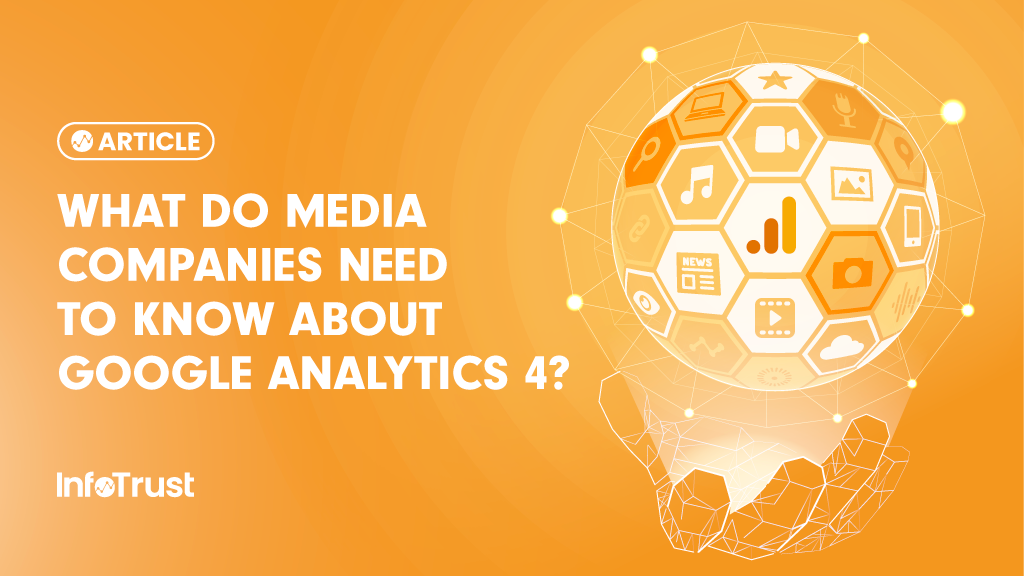So we all know that Google Analytics 4 is coming and coming fast. And we know if you use Google Analytics that you will need to upgrade. But are there other reasons why you should be using Google Analytics 4 (GA4)?
The simple answer is yes. You will get many benefits from migrating to GA4 as a news, media, or entertainment organization. You will be adding features while still keeping the GA you are familiar with. Let’s take a look at some of GA4’s benefits, and how they can help your business.
Benefits of Google Analytics 4
1. First, privacy. If you operate in the EU you have probably at least heard of GDPR. But even if you are U.S.-based, more and more states are writing their own privacy regulations similar to CCPA. In the past, supporting these privacy regulations could be difficult with GA. Even worse, if a user declined the use of cookies or a mobile device identifier for advertisers, you would lose all of your analytics data, skewing your reports and making them much less actionable.
GA4 introduces Consent Mode which adds support for consent management platforms. This makes it much easier to abide by the end user’s consent preferences. But there is also a neat trick GA4 can do in the case where users reject analytics cookies or an app identifier use: it can fill the data collection gaps and estimate what a user would do conversion-wise! This means your reports will be much more accurate and will have modeled (predicted) data, even if users don’t consent to tracking.
2. Second, combined app + web reporting. In the past, you might have set up separate GA profiles for your website and your apps (and/or your connected TV or over-the-top apps). However, as more and more users use several devices to access your content, this could lead to an added complexity of having to deduplicate users and their actions across devices and properties in your implementation. With GA4, you now can combine your web traffic with your app traffic and see as users cross between the two. This lets you see things like how many users completed an entire conversion funnel when starting in an app and then transitioning to web, for example.
For extra credit, if your site has a login and you capture that in GA4, you can even more easily tie user engagement across platforms!
But it isn’t just Android and iOS apps anymore—any Connected TV (CTV) app can also be tracked as yet another data stream in a GA4 property. This allows for unified measurement of web, android/iOS apps, and CTV apps all in one property. Wouldn’t it be great to see how users engage with your site, watch video on a mobile device, and then engage with your CTV app? GA4 lets you do this and more.
3. Third, integrations. Out of the box, the previous generation of GA didn’t have a lot of free integrations—especially some of the advertising management platform integrations and BigQuery. However, out-of-the-box GA4 includes these integrations, as well as Google Ads and BigQuery. In fact, GA4 is designed to work with BigQuery for backend reporting and analysis. You can now have these important integrations without needing to purchase a Google Analytics 360 license.
4. Fourth, custom reporting. We all have used GA user interface for reporting at some point and most likely have built and/or used custom reports in our daily analysis. And we also probably have hit the limitations of custom reports in GA. GA4 adds a new type of custom reporting called “Explorations”. While an exploration can return a table of data just like a GA custom report, it can also do the following:
- Visualize data using several chart types
- Allow you to build funnel reports to see where users drop off in a process (like a checkout or a subscription flow)
- Cohort reporting to see what a particular group of users does
- Segment reporting to see where different segments of users overlap
- Path reporting, to see a user flow through a site
- User reports, to see what actual individual users are doing on your site
These reports in GA4 are much more powerful and useful than the custom reporting inside of UA, and will allow you to have a deeper level of analysis of your data.
5. Fifth, events. GA4 is completely event-based. What this means is everything taking place on your site or in your app is an event. Even better, these events are much more freeform than in GA. You may remember a GA event has a category, action, and label (and sometimes value). GA4 allows you to have an event with a number of standard or custom parameters. No more cramming data into the action/label fields! For example, a file download in GA may look like the following:
- Category: file download
- Action: download
- Label: pdf | file title | file URL
The same download event in GA4 may look like this:
- Event: file download
- File type: pdf
- File name: file name
- File URL: url
- File author: author
- File published date: published date
See how much more data you can pass easily with GA4? And all this data can be sliced and diced using the custom reports discussed above!
Even better, a conversion in GA4 is defined as an event. So, you could for example label all file downloads as conversions, or configure a new custom event in GA4 user interface to only consider a file download from a particular author or a site section as a conversion.
These are just a few of the top reasons why GA4 is great for anyone, but especially for news, media, and entertainment companies. If you aren’t already using GA4, and need a hand, give us a call.


